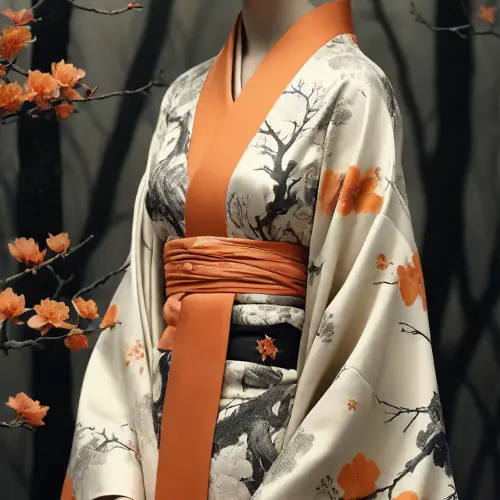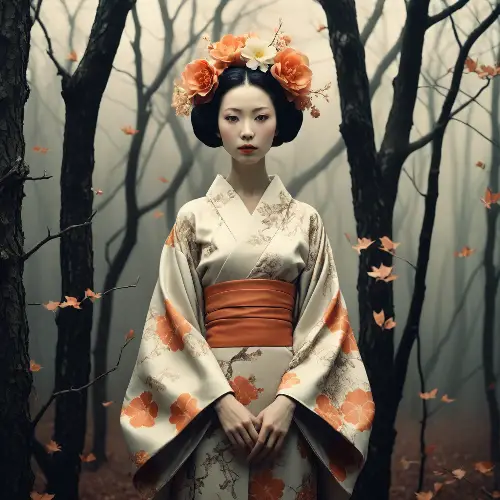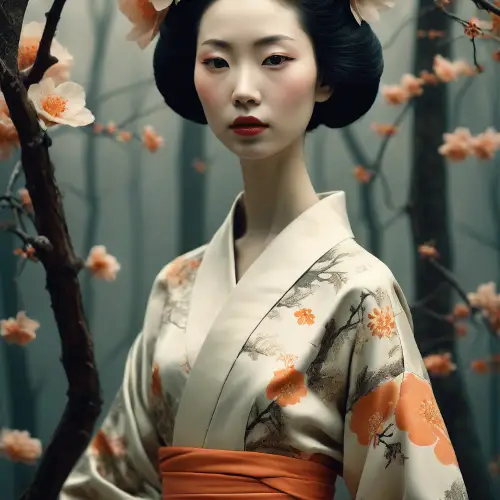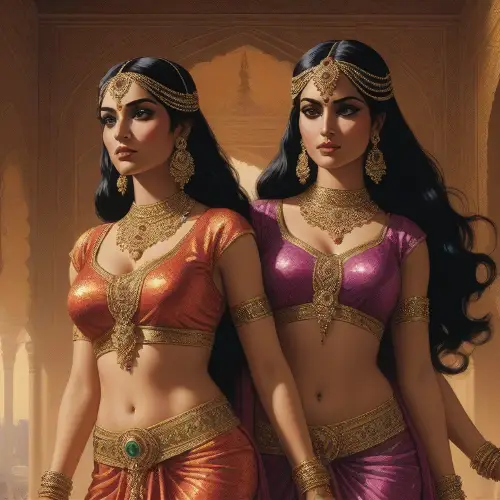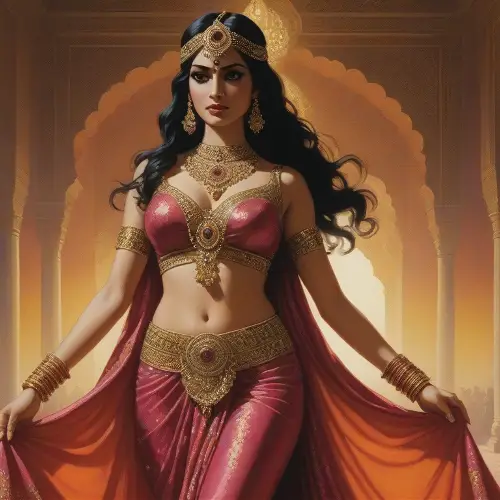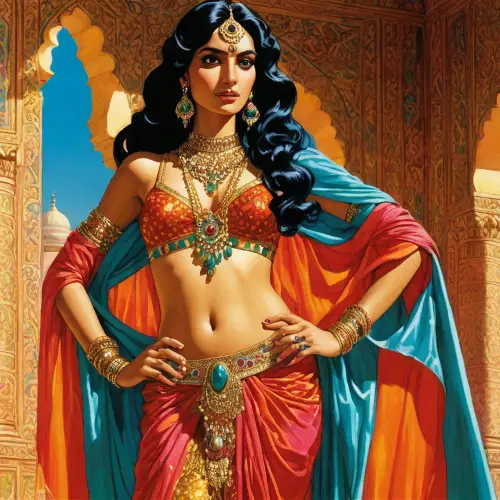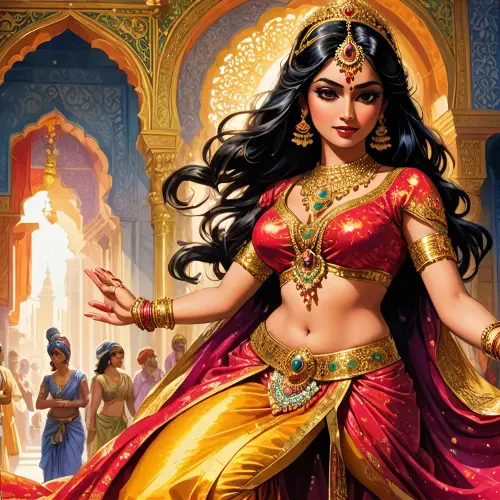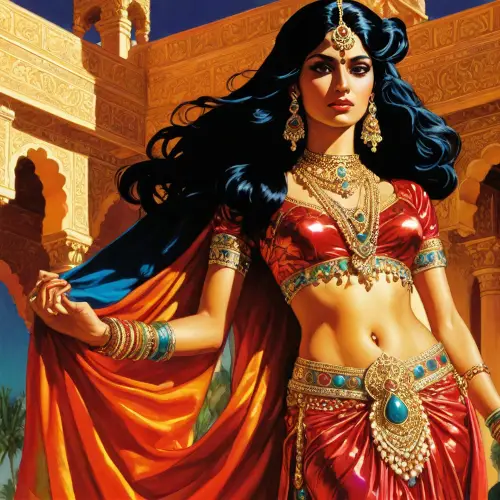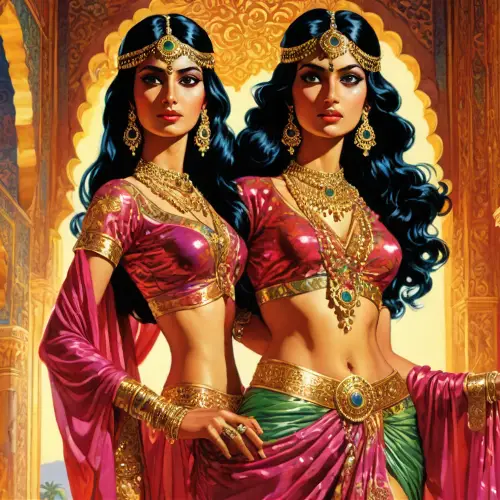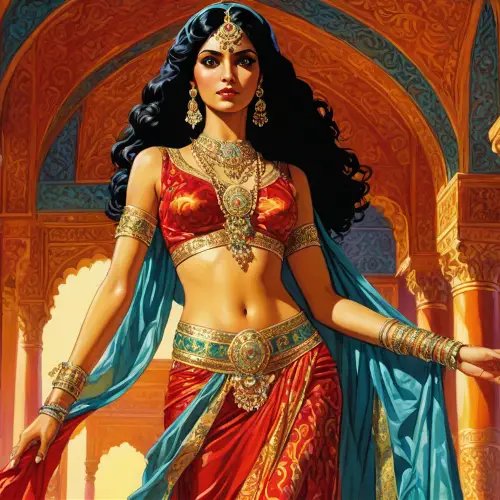Creating a photorealistic image that captures the essence of \"Zen\" can be a rewarding artistic endeavor. Zen, which is deeply rooted in Buddhist philosophy, emphasizes simplicity, naturalness, and a sense of tranquility. To visualize this concept, you would typically want to focus on natural elements, minimalist design, and a peaceful ambiance. Here is a step-by-step guide to help you create a photorealistic Zen-themed image: Choose Your Main Subject: Consider subjects that evoke calmness and serenity, such as a Zen garden, a simple still life with a bonsai tree, or smooth stones in sand. Select a Color Palette: Stick to muted, earthy tones like soft greens, warm browns, and grays to reinforce a natural and calming aesthetic. Plan the Composition: Aim for a balanced and harmonious composition. Use the rule of thirds to position key elements. Leave plenty of negative space to enhance the Zen concept of ma (negative space), which emphasizes the things that aren't there as much as the things that are. Set the Lighting: Soft, diffused lighting can help to create a serene mood. Consider the time of day that best reflects the peace of Zen, like early morning or dusk. Incorporate Texture: Detailing with texture such as raked sand patterns or the bark of a bonsai tree will add to the realism. Add Simplistic Elements: Elements like a single leaf or pebble can symbolize the Zen principle of kanso (simplicity). Focus on Detail and Realism: Pay attention to small details like shadows, reflections, and textures to enhance the photorealistic quality. Post-Processing: Use photo editing software to fine-tune colors, contrast, and saturation, and to ensure a natural look is maintained. Review and Reflect: Look at the image as a whole and consider if it truly conveys a sense of Zen. It should inspire a viewer to feel more mindful, present, and at peace.
More Like This
Creating a photorealistic image that captures the essence of \"Zen\" can be a rewarding artistic endeavor. Zen, which is deeply rooted in Buddhist philosophy, emphasizes simplicity, naturalness, and a sense of tranquility. To visualize this concept, you would typically want to focus on natural elements, minimalist design, and a peaceful ambiance. Here is a step-by-step guide to help you create a photorealistic Zen-themed image: Choose Your Main Subject: Consider subjects that evoke calmness and serenity, such as a Zen garden, a simple still life with a bonsai tree, or smooth stones in sand. Select a Color Palette: Stick to muted, earthy tones like soft greens, warm browns, and grays to reinforce a natural and calming aesthetic. Plan the Composition: Aim for a balanced and harmonious composition. Use the rule of thirds to position key elements. Leave plenty of negative space to enhance the Zen concept of ma (negative space), which emphasizes the things that aren't there as much as the things that are. Set the Lighting: Soft, diffused lighting can help to create a serene mood. Consider the time of day that best reflects the peace of Zen, like early morning or dusk. Incorporate Texture: Detailing with texture such as raked sand patterns or the bark of a bonsai tree will add to the realism. Add Simplistic Elements: Elements like a single leaf or pebble can symbolize the Zen principle of kanso (simplicity). Focus on Detail and Realism: Pay attention to small details like shadows, reflections, and textures to enhance the photorealistic quality. Post-Processing: Use photo editing software to fine-tune colors, contrast, and saturation, and to ensure a natural look is maintained. Review and Reflect: Look at the image as a whole and consider if it truly conveys a sense of Zen. It should inspire a viewer to feel more mindful, present, and at peace.
Creating a photorealistic image that captures the essence of \"Zen\" can be a rewarding artistic endeavor. Zen, which is deeply rooted in Buddhist philosophy, emphasizes simplicity, naturalness, and a sense of tranquility. To visualize this concept, you would typically want to focus on natural elements, minimalist design, and a peaceful ambiance. Here is a step-by-step guide to help you create a photorealistic Zen-themed image: Choose Your Main Subject: Consider subjects that evoke calmness and serenity, such as a Zen garden, a simple still life with a bonsai tree, or smooth stones in sand. Select a Color Palette: Stick to muted, earthy tones like soft greens, warm browns, and grays to reinforce a natural and calming aesthetic. Plan the Composition: Aim for a balanced and harmonious composition. Use the rule of thirds to position key elements. Leave plenty of negative space to enhance the Zen concept of ma (negative space), which emphasizes the things that aren't there as much as the things that are. Set the Lighting: Soft, diffused lighting can help to create a serene mood. Consider the time of day that best reflects the peace of Zen, like early morning or dusk. Incorporate Texture: Detailing with texture such as raked sand patterns or the bark of a bonsai tree will add to the realism. Add Simplistic Elements: Elements like a single leaf or pebble can symbolize the Zen principle of kanso (simplicity). Focus on Detail and Realism: Pay attention to small details like shadows, reflections, and textures to enhance the photorealistic quality. Post-Processing: Use photo editing software to fine-tune colors, contrast, and saturation, and to ensure a natural look is maintained. Review and Reflect: Look at the image as a whole and consider if it truly conveys a sense of Zen. It should inspire a viewer to feel more mindful, present, and at peace.
Create a serene image representing mindfulness, such as a person meditating, practicing yoga, or engaging in a peaceful activity. Use calming colors and a tranquil background.
Create a serene image representing mindfulness, such as a person meditating, practicing yoga, or engaging in a peaceful activity. Use calming colors and a tranquil background.
In a masterpiece orchestrated by the lens of Dmitry Kosovoy, we find a woman transformed into a living sculpture amidst a surreal forest of lifeless trees. This composition takes inspiration from the artistic style of Ray Caesar, blending the ethereal and the tangible in breathtaking harmony. The central figure, a woman of profound grace and mystique, dons an elaborate kimono that billows around her like the petals of a surreal flower. The kimono itself is a work of art, adorned with intricate patterns in contrasting shades of dark white and light orange. These colors create an otherworldly ambiance that defies conventional reality. As if in a reverie of juxtaposition, the forest surrounding her consists of dead trees, their twisted branches reaching out like skeletal fingers. These eerie remnants of nature form a compelling backdrop, serving as a stark contrast to the woman's vitality. The composition is further enriched by the presence of birds and flowers, mirroring the themes found in the works of Patricia Piccinini. These avian and floral elements lend an aura of life and renewal to the scene, suggesting that even in desolation, there is the potential for rebirth and transformation. The influence of Zen Buddhism is evident in the woman's serene expression and the tranquil energy that emanates from her. It's as though she has discovered a profound connection between her inner self and the world around her. The technical aspects of this photograph are as impressive as its artistic elements. High-resolution photography is a must, ensuring that every nuance, from the intricate details of the kimono to the fine texture of the dead trees, is captured with utmost clarity. To bring out the depth and dimensionality of the portrait, Dmitry Kosovoy employs the Rembrandt lighting technique. This technique bathes the subject's face in a soft, diffused light, accentuating the sculptural qualities of her visage and adding a touch of chiaroscuro drama to the scene. The backdrop is a seamless canvas, allowing the subject to take center stage without any distractions. This simplicity enhances the dreamlike quality of the photograph, emphasizing the woman's role as a living sculpture amidst a surreal and captivating landscape. The result is not just a photograph but a work of art that transcends the boundaries of reality, inviting viewers to contemplate the delicate interplay between life and death, art and nature, and the enduring beauty of the human spirit --ar 23:24 --
In a masterpiece orchestrated by the lens of Dmitry Kosovoy, we find a woman transformed into a living sculpture amidst a surreal forest of lifeless trees. This composition takes inspiration from the artistic style of Ray Caesar, blending the ethereal and the tangible in breathtaking harmony. The central figure, a woman of profound grace and mystique, dons an elaborate kimono that billows around her like the petals of a surreal flower. The kimono itself is a work of art, adorned with intricate patterns in contrasting shades of dark white and light orange. These colors create an otherworldly ambiance that defies conventional reality. As if in a reverie of juxtaposition, the forest surrounding her consists of dead trees, their twisted branches reaching out like skeletal fingers. These eerie remnants of nature form a compelling backdrop, serving as a stark contrast to the woman's vitality. The composition is further enriched by the presence of birds and flowers, mirroring the themes found in the works of Patricia Piccinini. These avian and floral elements lend an aura of life and renewal to the scene, suggesting that even in desolation, there is the potential for rebirth and transformation. The influence of Zen Buddhism is evident in the woman's serene expression and the tranquil energy that emanates from her. It's as though she has discovered a profound connection between her inner self and the world around her. The technical aspects of this photograph are as impressive as its artistic elements. High-resolution photography is a must, ensuring that every nuance, from the intricate details of the kimono to the fine texture of the dead trees, is captured with utmost clarity. To bring out the depth and dimensionality of the portrait, Dmitry Kosovoy employs the Rembrandt lighting technique. This technique bathes the subject's face in a soft, diffused light, accentuating the sculptural qualities of her visage and adding a touch of chiaroscuro drama to the scene. The backdrop is a seamless canvas, allowing the subject to take center stage without any distractions. This simplicity enhances the dreamlike quality of the photograph, emphasizing the woman's role as a living sculpture amidst a surreal and captivating landscape. The result is not just a photograph but a work of art that transcends the boundaries of reality, inviting viewers to contemplate the delicate interplay between life and death, art and nature, and the enduring beauty of the human spirit --ar 23:24 --
In a masterpiece orchestrated by the lens of Dmitry Kosovoy, we find a woman transformed into a living sculpture amidst a surreal forest of lifeless trees. This composition takes inspiration from the artistic style of Ray Caesar, blending the ethereal and the tangible in breathtaking harmony. The central figure, a woman of profound grace and mystique, dons an elaborate kimono that billows around her like the petals of a surreal flower. The kimono itself is a work of art, adorned with intricate patterns in contrasting shades of dark white and light orange. These colors create an otherworldly ambiance that defies conventional reality. As if in a reverie of juxtaposition, the forest surrounding her consists of dead trees, their twisted branches reaching out like skeletal fingers. These eerie remnants of nature form a compelling backdrop, serving as a stark contrast to the woman's vitality. The composition is further enriched by the presence of birds and flowers, mirroring the themes found in the works of Patricia Piccinini. These avian and floral elements lend an aura of life and renewal to the scene, suggesting that even in desolation, there is the potential for rebirth and transformation. The influence of Zen Buddhism is evident in the woman's serene expression and the tranquil energy that emanates from her. It's as though she has discovered a profound connection between her inner self and the world around her. The technical aspects of this photograph are as impressive as its artistic elements. High-resolution photography is a must, ensuring that every nuance, from the intricate details of the kimono to the fine texture of the dead trees, is captured with utmost clarity. To bring out the depth and dimensionality of the portrait, Dmitry Kosovoy employs the Rembrandt lighting technique. This technique bathes the subject's face in a soft, diffused light, accentuating the sculptural qualities of her visage and adding a touch of chiaroscuro drama to the scene. The backdrop is a seamless canvas, allowing the subject to take center stage without any distractions. This simplicity enhances the dreamlike quality of the photograph, emphasizing the woman's role as a living sculpture amidst a surreal and captivating landscape. The result is not just a photograph but a work of art that transcends the boundaries of reality, inviting viewers to contemplate the delicate interplay between life and death, art and nature, and the enduring beauty of the human spirit --ar 23:24 --
Create a serene image representing mindfulness, such as a person meditating, practicing yoga, or engaging in a peaceful activity. Use calming colors and a tranquil background. Indian Female
Create a serene image representing mindfulness, such as a person meditating, practicing yoga, or engaging in a peaceful activity. Use calming colors and a tranquil background. Indian Female
Create a serene image representing mindfulness, such as a person meditating, practicing yoga, or engaging in a peaceful activity. Use calming colors and a tranquil background. Indian Female
Design an image featuring a serene with a motivational background. Consider using calming colors and elements that evoke a sense of well-being.
Design an image featuring a serene with a motivational background. Consider using calming colors and elements that evoke a sense of well-being.
Ultra realistic image of a peaceful and serene scene that evokes the feeling of inner silence and stillness. the scene could include elements such as nature, water, or a meditative space. it should be a visually appealing image that conveys the transformative potential of your work. the ocean is a deep blue, and the waves are gentle and calming. the air is fresh and clean, and the only sound is the gentle lapping of the waves against person dressed in comfortable, flowing clothing. they are sitting in various positions of meditation, with their eyes closed and their faces serene. there is a sense of peace and harmony in the air. the lush greenery and crystal-clear water surrounding the ship add to the sense of tranquility.
/create prompt: Tranquil zen setting, stack of smooth black stones, bamboo stick, clear water, vibrant green backdrop, sense of harmony, peace, natural elements, water droplets, nature's simplicity:: Reflections, ripples on water surface, fresh after-rain atmosphere, high-resolution, artistic depth of field:: Photorealistic, professional photograph, trending on ArtStation, Bokeh, HDR, at water fountain in river , UHD:: Text, human hands::-0.5 -- HD, highly detailed::0.8 --ar 16:9 --style raw
Create a visual masterpiece that encapsulates the profound tranquility of Vipassana meditation within the confines of a traditional pagoda. Picture a serene landscape where a majestic pagoda, adorned with intricate details, stands as a haven for introspection. Pagoda Overview: Begin with an exterior view of the pagoda, showcasing its grandeur against the backdrop of a calm natural setting. Emphasize traditional architectural details, such as tiered roofs and ornate spires, to evoke a sense of sacredness. Individual Meditation Cells: Zoom in to depict the interior of the pagoda, revealing individual meditation cells. Each cell should exude simplicity and spiritual ambiance, with minimalistic furnishings, soft lighting, and a serene atmosphere conducive to meditation. Meditators in Silence: Populate the cells with Vipassana meditators engaged in silent contemplation. Illustrate various meditation postures, such as seated on cushions or meditation benches, with their eyes closed and a focused yet serene expression. Highlight the diversity of practitioners. Play of Light: Use the play of natural light within the pagoda to create a peaceful and meditative ambiance. Show how light filters through intricately designed windows, casting gentle rays on the meditators and the surroundings. Symbolic Elements: Integrate symbolic elements like lotus flowers, traditional meditation tools, or subtle patterns on the pagoda walls, adding depth and cultural significance to the scene. Harmony with Nature: Surround the pagoda with elements of nature – perhaps glimpses of a tranquil garden, swaying trees, or a reflective pond. Reinforce the idea that the pagoda is in harmony with its natural surroundings. Time of Day: Consider the time of day to set the mood – whether its the soft hues of dawn, the warmth of midday sunlight, or the serene tones of dusk. Align the chosen time with the meditative atmosphere you wish to convey.
Design an image featuring a serene background with a motivational quote overlay \"Embrace the serenity of a mindful morning, where gentle stretches and soft morning light set the tone for a peaceful day. Consider using calming colors and elements that evoke a sense of well-being.
Design an image featuring a serene background with a motivational quote overlay \"Embrace the serenity of a mindful morning, where gentle stretches and soft morning light set the tone for a peaceful day. Consider using calming colors and elements that evoke a sense of well-being.
Create a trial base image suitable for poster promotion, emphasizing a meditation course theme. The image should have dimensions of 19cm × 25cm, and a resolution of 72 pixels per inch. Incorporate serene elements like meditation symbols, calming colors, and possibly a meditation space to evoke a tranquil atmosphere.
Create a trial base image suitable for poster promotion, emphasizing a meditation course theme. The image should have dimensions of 19cm × 25cm, and a resolution of 72 pixels per inch. Incorporate serene elements like meditation symbols, calming colors, and possibly a meditation space to evoke a tranquil atmosphere.
Create a trial base image suitable for poster promotion, emphasizing a meditation course theme. The image should have dimensions of 19cm × 25cm, and a resolution of 72 pixels per inch. Incorporate serene elements like meditation symbols, calming colors, and possibly a meditation space to evoke a tranquil atmosphere.
Create a trial base image suitable for poster promotion, emphasizing a meditation course theme. The image should have dimensions of 19cm × 25cm, and a resolution of 72 pixels per inch. Incorporate serene elements like meditation symbols, calming colors, and possibly a meditation space to evoke a tranquil atmosphere.
Design an image featuring a serene background with a motivational quote overlay. Consider using calming colors and elements that evoke a sense of well-being.
Creating a hyper-realistic, photorealistic scene involves intricate details and professional tools. You might consider hiring a skilled digital artist or using advanced graphic design software to bring your vision to life. Describing the scene vividly can help convey your idea to the artist or guide your own creative process. Picture a serene field with lush greenery, men savoring a non-veg feast on banana leaves under the warm glow of cinematic lighting, surrounded by swaying coconut trees.
:Design an image featuring a serene background with a motivational quote overlay. Consider using calming colors and elements that evoke a sense of well-being. Quote to Overlay \\\"Embrace the serenity of a mindful morning, where gentle stretches and soft morning light set the tone for a peaceful day. 🌅✨ #MindfulMornings #WellnessJourney\\\"
Indo-Saracenic style, full body, Indian 25-year-old woman, in Indian clothes, belly dancing, in the rich, glittering, lavish luxury palace of the rajah, 70s, colorful, vibrant color, soft light, high detailing, complex background, detailed facial features, best quality, by Alex Ross Frank Miller Fred Warter Boris Vallejo
Indo-Saracenic style, full body, Indian 25-year-old woman, in Indian clothes, belly dancing, in the rich, glittering, lavish luxury palace of the rajah, 70s, colorful, vibrant color, soft light, high detailing, complex background, detailed facial features, best quality, by Alex Ross Frank Miller Fred Warter Boris Vallejo
Indo-Saracenic style, full body, Indian 25-year-old woman, in Indian clothes, belly dancing, in the rich, glittering, lavish luxury palace of the rajah, 70s, colorful, vibrant color, soft light, high detailing, complex background, detailed facial features, best quality, by Alex Ross Frank Miller Fred Warter Boris Vallejo
Indo-Saracenic style, full body, Indian 25-year-old woman, in Indian clothes, belly dancing, in the rich, glittering, lavish luxury palace of the rajah, 70s, colorful, vibrant color, soft light, high detailing, complex background, detailed facial features, best quality, by Alex Ross Frank Miller Fred Warter Boris Vallejo
Indo-Saracenic style, full body, Indian 25-year-old woman, in Indian clothes, belly dancing, in the rich, glittering, lavish luxury palace of the rajah, 70s, colorful, vibrant color, soft light, high detailing, complex background, detailed facial features, best quality, by Alex Ross Frank Miller Fred Warter Boris Vallejo
Indo-Saracenic style, full body, Indian 25-year-old woman, in Indian clothes, belly dancing, in the rich, glittering, lavish luxury palace of the rajah, 70s, colorful, vibrant color, soft light, high detailing, complex background, detailed facial features, best quality, by Alex Ross Frank Miller Fred Warter Boris Vallejo
Indo-Saracenic style, full body, Indian 25-year-old woman, in Indian clothes, belly dancing, in the rich, glittering, lavish luxury palace of the rajah, 70s, colorful, vibrant color, soft light, high detailing, complex background, detailed facial features, best quality, by Alex Ross Frank Miller Fred Warter Boris Vallejo
Indo-Saracenic style, full body, Indian 25-year-old woman, in Indian clothes, belly dancing, in the rich, glittering, lavish luxury palace of the rajah, 70s, colorful, vibrant color, soft light, high detailing, complex background, detailed facial features, best quality, by Alex Ross Frank Miller Fred Warter Boris Vallejo
Indo-Saracenic style, full body, Indian 25-year-old woman, in Indian clothes, belly dancing, in the rich, glittering, lavish luxury palace of the rajah, 70s, colorful, vibrant color, soft light, high detailing, complex background, detailed facial features, best quality, by Alex Ross Frank Miller Fred Warter Boris Vallejo
Indo-Saracenic style, full body, Indian 25-year-old woman, in Indian clothes, belly dancing, in the rich, glittering, lavish luxury palace of the rajah, 70s, colorful, vibrant color, soft light, high detailing, complex background, detailed facial features, best quality, by Alex Ross Frank Miller Fred Warter Boris Vallejo
Indo-Saracenic style, full body, Indian 25-year-old woman, in Indian clothes, belly dancing, in the rich, glittering, lavish luxury palace of the rajah, 70s, colorful, vibrant color, soft light, high detailing, complex background, detailed facial features, best quality, by Alex Ross Frank Miller Fred Warter Boris Vallejo










